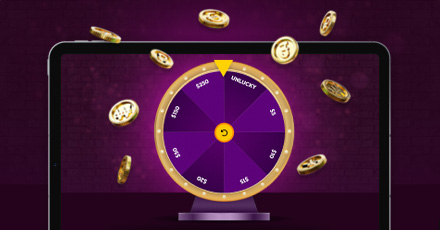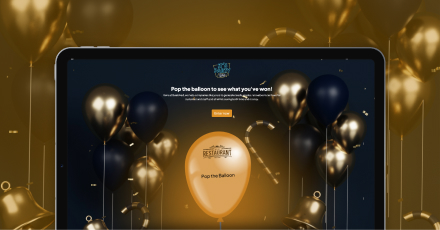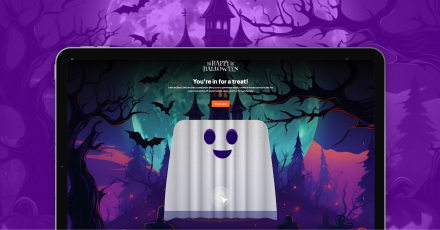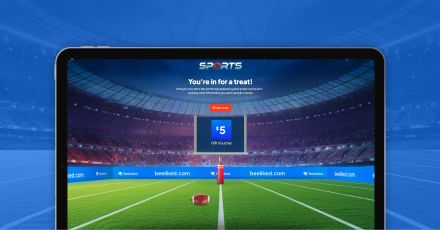For many business leaders, learning how to engage employees can be the key to success. This should come as no surprise, as an organization’s leaders are the most powerful influencers of company culture. The employee engagement techniques they embrace influence every part of the workplace and set the tone for employee satisfaction and well-being.
In this post we’ll expand on our previous musings about employee engagement best practices and talk about how leaders specifically impact employee engagement. We’ll also pass on some of our favorite tips—including gamification—for engaging employees and dig a little deeper into how leadership can motivate employees and drive engagement.

The Three Components of Employee Engagement
In every aspect of life, the vast majority of humans crave social connection. These connections reinforce the need to be a valued group member, and they cross all gender, race, and ethnicity lines. Successful workplace cultures are built on engaged employees who feel happy in their roles. They come to work each day motivated to contribute their personal best, revel in shared group accomplishments, and feel valued for their contributions.
Constructing a culture where employee engagement is high takes three powerful tools:
- Validation is the unconditional recognition of employees for who they are and what value they bring to the organization’s success. It’s offered regardless of individual outcomes and encompasses true listening, hearing, and responding. It is the foundation of all relationships in and outside the workplace. Making validation a daily leadership habit conveys to employees: I see you as a human being.
- Recognition is more conditional than validation. It’s typically based on work behaviors, attitude, and job performance. A positive expression of appreciation, it acknowledges a job well-done and efforts to exceed expectations. As a tool for boosting engagement, it must be consistent, frequent, and sincere. Leaders who understand the human need for recognition find a way to introduce it into the company culture in multiple ways.
- Feedback is made up of the periodic, confidential conversations leaders have with employees. It can cover everything from work habits to job performance and an employee’s personal growth. Useful feedback provides both supportive insight and compassionate criticism to help employees improve and grow. The most helpful feedback is two-way, with managers offering constructive feedback that focuses on desired outcomes (not past mistakes) and employees sharing what they need to perform better and succeed in their goals.
All successful leaders use these tools to improve performance, accountability, and positive results. Essential to ensuring they promote higher engagement is realizing employees need to be seen and valued, understand their accomplishments are appreciated, and know there’s a plan to help them improve and grow.

How Do Leaders Impact Employee Engagement?
Every organization and each leader has distinct strategies for successfully engaging employees. Visionary leaders who understand how to boost employee confidence and keep performance from wavering use various tools and techniques to maintain employee trust, drive optimal levels of productivity, and increase overall satisfaction and retention. That the result of these efforts is often positioning the company for success is no coincidence.
Leadership, or lack of it, is often the main reason an employee decides to quit their job. Studies show at least 75% of the reasons employees leave their company can be attributed to things managers influence, while only 12% of employees leave their position to take a higher paying one somewhere else. Interestingly, nearly 90% of managers believe employees leave for financial reasons.
In other words, people don’t leave jobs, they leave their bosses. So what can leadership do to positively affect employee motivation and engagement? Are there clear ways to engage employees to inspire loyalty? One way, as we’ve discussed before, is helping them develop a winning mindset. Another is finding innovative ways to bring employees together around a common purpose—your organization’s success.

Creative Ways to Engage Employees
When it’s clearer what a leader’s role is in improving engagement, it’s easier to develop and adopt ways to engage employees. No matter which techniques and programs you choose, engagement levels will naturally shift, particularly when new employees are onboarded and new policies and goals are put in place.
There are as many employee engagement ideas as there are employees. What your employees respond to can be far removed from what another organization’s employees find motivating. Across the board, though, the best employee engagement ideas have these traits in common.
- They promote collaboration
- They’re fun
- Create a roadmap to achieve personal and professional goals
Gamification helps foster creativity and engagement by tapping into an employee’s skill sets, aspirations, and need for recognition. A majority of gamification studies have found the technique has significant positive effects on employee engagement, helping employees set goals, achieve success, and earn rewards.
A well-designed gamification program guides employees toward higher achievements and gives them real-time feedback that encourages, improves, and, perhaps most importantly, leads to measurable accomplishments. Gamification makes the workplace’s inherent competitiveness more enjoyable and ensures competition stays friendly, supportive, and productive. And success is instantly awarded via peer and management recognition.
How to Keep Employees Engaged and Motivated
There are proven action steps leaders can take to cultivate employee engagement:
- Weigh which of the three crucial components of engagement (validation, recognition, feedback) you need to become more intentional with each day. Do you validate employees daily? Do you offer authentic recognition? Are employees provided with helpful feedback that helps them reach their goals?
- Build a habit of regularly validating, recognizing, and providing feedback to employees.
- Keep track of how often you engage with and recognize each employee.
- Occasionally send handwritten or digital notes to employees thanking them for going above and beyond their job duties.
- Meet with employees one-on-one and listen to their concerns. Use your responses to demonstrate you have their best interests at heart.
- Train supervisors to use the same habits of validation, recognition, and feedback.
If you ever notice a dip in engagement, it’s worth exploring whether you need to increase your efforts or if your employees’ needs have changed. Either way, the best way to find out is, you guessed it, to ask them!

Lead the Way with Gamification
Engaged employees are more likely to be productive at work, have a better work-life balance, and report greater job satisfaction. Gamification helps employees reach their goals and rewards them for their efforts and performance. And because you can customize digital games, they’re the perfect engagement tool for any industry or business environment. From pop quizzes to digital scratch card games, digital games give employees a sense of accomplishment and help the organizations who use them to track progress and reward results.
About BeeLiked
BeeLiked’s employee engagement games are designed to reward positive behaviors, build long-term relationships, and deliver value via improved productivity and higher profits. We believe gamification is one of the most creative and successful ways to boost employee engagement while improving your bottom line. To learn more about our products and solutions, get in touch with us today to set up a no-obligation discovery call.
















